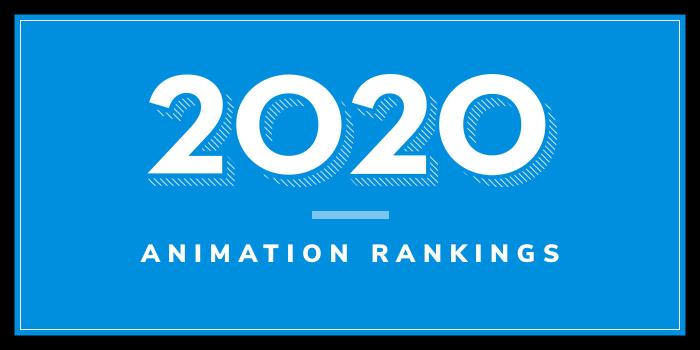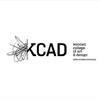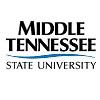
What are the top public animation schools of 2020?
| Ranking | School | State | % |
|---|---|---|---|
| 1 | University of California, Los Angeles | California | 1% |
| 2 | San Jose State University | California | 2% |
| 3 | University of Central Florida | Florida | 3% |
| 4 | Purdue University | Indiana | 4% |
| 5 | The Ohio State University | Ohio | 5% |
| 6 | Massachusetts College of Art and Design | Massachusetts | 6% |
| 7 | California State University-Fullerton | California | 7% |
| 8 | University of Washington | Washington | 8% |
| 9 | Texas A&M University | Texas | 9% |
| 10 | California State University-Long Beach | California | 10% |
| 11 | Clemson University | South Carolina | 15% |
| 12 | University of Texas at Dallas | Texas | 15% |
| 13 | Florida State University | Florida | 15% |
| 14 | California State University-Northridge | California | 15% |
| 15 | Bowling Green State University | Ohio | 15% |
| 16 | Ball State University | Indiana | 20% |
| 17 | California State University-Los Angeles | California | 20% |
| 18 | Virginia Polytechnic Institute and State University | Virginia | 20% |
| 19 | University of Colorado - Denver | Colorado | 20% |
| 20 | Edinboro University | Pennsylvania | 25% |
| 21 | Ferris State University | Michigan | 25% |
| 22 | New Mexico State University | New Mexico | 25% |
| 23 | East Tennessee State University | Tennessee | 25% |
| 24 | University of North Carolina School of the Arts | North Carolina | 25% |
| 25 | Sam Houston State University | Texas | 30% |
| 26 | University of Iowa | Iowa | 30% |
| 27 | University of Florida | Florida | 30% |
| 28 | University of South Florida | Florida | 30% |
| 29 | Middle Tennessee State University | Tennessee | 30% |
| 30 | University of Connecticut | Connecticut | 35% |
| 31 | Missouri State University | Missouri | 35% |
| 32 | Louisiana State University | Louisiana | 35% |
| 33 | New Jersey Institute of Technology | New Jersey | 35% |
| 34 | Virginia Commonwealth University | Virginia | 35% |
| 35 | North Carolina State University at Raleigh | North Carolina | 40% |
| 36 | University of Montana | Montana | 40% |
| 37 | Rutgers University | New Jersey | 40% |
| 38 | Towson University | Maryland | 40% |
| 39 | Ohio University | Ohio | 40% |
| 40 | University of Illinois at Chicago | Illinois | 45% |
Our 2020 list of the Top 40 Public Animation School Programs in the US.
For an explanation of ranking criteria, click here.

Founded in 1919 as the Southern Branch of the University of California, University of California Los Angeles (UCLA) serves nearly 45,500 students from all 50 states and more than 100 foreign countries. The school offers 125+ undergraduate majors across 109 academic departments, and more than 40 graduate programs including the Animation Workshop of the School of Theater, Film and Television.
Founded in 1948 by Disney animator William Shull, the UCLA Animation Workshop is a three-year MFA program that accepts just 12 new students each year. Per the school, "the first year of the program is devoted to learning the principles of making a traditional hand-done, animated film and the second year is devoted to creating computer animation; the film may be 2D, 3D, or a combination.” The third year of the program “begins with the creation of an interactive animation project or game. Electives and outstanding requirements are completed. Most significantly, the student forms a Thesis Committee and begins production on their thesis film.”
Graduates of UCLA’s animation programs have landed positions at Pixar, they have worked with directors such as Tim Burton, and on films such as The Simpsons Movie and Monster House.

San Jose State University (SJSU) was founded in 1857. The school serves approximately 36,000 students enrolled in bachelor’s, master’s and doctoral degree programs in 250 areas of study across eight colleges. The College of Humanities and the Arts houses the Department of Design, which offers a BFA in Animation/Illustration. The core curriculum for the 120 credit hour program “combines both traditional and innovative educational strategies, says the school. “Rigorous drawing classes and intensive study of color theory, design, perspective, and conventional and digital painting are required, as well as the study of the principles of both traditional and 3D animation, physics of motion, modeling, storyboarding, character design, and visual development.” The program’s upper-division courses “further define these disciplines offering students an opportunity to specialize in their area of choice.”
Graduates of the BFA in Animation/Illustration program have worked on films such as A Bug’s Life, Finding Nemo, Monsters, Inc. and Shrek and they have been hired at more than 135 animation studios, game design companies, film studios, and academic institutions. Just a few include 20th Century Fox, Animation Mentor, Blue Sky Studios, Blizzard Entertainment, Cartoon Network, Cogswell Institute, Disney Interactive, Electronic Arts, Lucasfilm Animation, NBCUniversal Studios, Nickelodeon, Pixar, Sony/Columbia, The Art Institute of Las Vegas, Disney Animation, and Zynga.
For BFA graduates seeking an advanced degree, the Department of Design at SJSU offers an MFA in Digital Media Art. The program is offered at the CADRE Institute, which “reflects the innovative atmosphere in Silicon Valley.” Academic programs emphasize artistic experimentation within a context of historical, cultural, and theoretical study. The program is intended for students with interest in contemporary research. CADRE's diverse community of faculty and graduate students produce artworks involving visualization, simulation, hypertextuality, information, mapping, telepresence, networks, and interactive systems.
Technical facilities include a wide range of computing resources. Students work across the boundaries of computer visualization, animation, digital video, multimedia, electronic sculpture, sound and virtual reality. CADRE supports its own networking environment and offers excellent opportunities to produce internet-based artworks.

Serving approximately 68,571 students across four campuses, the University of Central Florida (UCF) is the nation’s second-largest university and Florida’s largest by enrollment. Established in 1963, the school is also one of the nation’s youngest universities. UCF offers more than 220 degree programs across 13 colleges. The College of Arts and Humanities houses the School of Visual Arts & Design (SVAD), which offers a number of degree programs for aspiring animators.
Options include a BFA in Art with an Emerging Media Track/Character Animation Specialization and an Emerging Media Track/Experimental Animation Specialization. The school says Character Animation “allows students to integrate the multiple domains of art, storytelling, and technology.” The program is “designed to provide a solid foundation in techniques and theory in one focused area of competence, as well as a broad understanding of related disciplines including arts, humanities, and technology.” The program also offers, “extended experience in working in multidisciplinary teams on realistic problems.”
Graduates of the program are prepared to seek careers as animators, modelers, riggers, or texture artists in the film or computer game industries.
The Experimental Animation Specialization “offers students the opportunity to explore expression through innovative and hybrid analog and digital methodology.” Students in the program will “engage in classic, current, and widely varied techniques and mediums making moving images, which may be narrative or non-narrative.” Students will have the opportunity to “develop a unique creative vision which culminates in the completion of a BFA thesis project and exhibition/screening.”
All animation students will use industry-leading software on Mac and PC-based platforms to create projects, works and portfolios.
For students looking to continue on to a graduate program, UCF SVAD offers an MA in Visual Language and Interactive Media, and an MFA in Emerging Media with an Animation and Visual Effects, Entrepreneurial Digital Cinema, or Studio Art and the Computer Track. The MA focuses on the development of advanced skills for digital media professionals, while the MFA is a terminal scholarly and creative degree suitable for students wishing to pursue careers as professors in higher education or as creative leaders in industry. The graduate programs are designed to “emulate the professional studio environment, providing each student with an opportunity to assume an artistic leadership role. The principal emphasis is placed on narrative film structure and the entrepreneurial aspect of animation as related to studio and job creation.” Courses for the programs are designed to give students the “ability to understand the collaborative function of a commercial studio.” Labs and studios are equipped with the same industry-standard software and hardware used in professional studios.
Graduates of SVAD’s Emerging Media Program work in creating simulations for the U.S. Navy, NASA, DISTI, Lockheed Martin and other local and regional companies. In addition, SVAD alumni are currently working nationally and internationally for major animation and gaming companies such as Walt Disney Animation Studios, Reel EFX, Nickelodeon Animation Studios, Electronic Arts, Riot Games, and Blizzard Entertainment.

Established in 1869, Purdue University serves around 43,400 students from all 50 states and nearly 130 countries. One of the 10 academic colleges at Purdue University, Purdue Polytechnic Institute was founded in 1964 as Purdue University’s School of Technology. Around 12% of Purdue’s students are enrolled in the Polytechnic Institute, which houses eight departments and schools offering 68 academic options in six subject areas. The Department of Computer Graphics Technology (CGT) offers animation programs at all degree levels.
The BS in CGT with a Major in Animation focuses on six areas of animation including 3D Modeling, Texturing, Lighting, Rendering, Character Rigging (creating a digital skeleton) and Motion. Graduates of the BS program have found employment at DreamWorks, Walt Disney Company, and Rhythm & Hues and eight of the school’s alumni were part of the creative teams behind 2014 Oscar winner Big Hero 6 and 2014 Golden Globe winner How to Train Your Dragon 2.
The CGT Department also offers a BS in CGT with a Major in Visual Effects Compositing that combines Animation, Visual Effects, and Video to create “highly graphical” videos for episodic television and films. A BS in Effects Technical Direction is also available and it highlights supplemental coursework in Animation. Graduates of the program have also landed positions at DreamWorks, Walt Disney Company, and Rhythm & Hues.
Graduate offerings include an MS in CGT and a PhD in Technology offered through the Department of Computer and Information Technology (CIT). The MS offers several focus areas for aspiring animators including Computer Animation, Video Production and Visual Effects, Computational Art, and Virtual and Augmented Reality.
The PhD Program offers a CGT Specialization that covers Animation, Game Studies, Human Centered Design and Development, Virtual Product Integration, and Web Programming and Design. Students may also earn a BS CGT/MS Technology with a Specialization in CGT, which may be completed in just five years instead of six years or more if pursued separately.

Established in 1870 as Ohio Agricultural and Mechanical College, The Ohio State University offers over 200 majors, minors and specializations from which more than 68,000 students can choose multiple paths to focus on animation in both the College of Arts and Sciences and the College of Engineering. Paths in animation encourage students to explore courses in 3D modeling, 2D/3D animation, video game production, augmented and virtual reality, digital imaging, digital video, interactive visualization, interactive art, game art and design, Art Games, motion capture, procedural content generation for games, real-time rendering, photogrammetry and more at both the undergraduate and graduate levels. Students in all programs can work on individually defined or team-based projects.
The Department of Art offers BFA and MFA degrees in Art with an emphasis in Art and Technology. It emphasizes the creation of animation, interactive art and experimental forms in the context of art making.
The Department of Design offers an MFA degree in Design focusing on Digital Animation and Interactive Media. This program emphasizes the production of creative research-based projects in the user-centered context of design.
The Department of Computer Science and Engineering (CSE) offers BS, MS and PhD degrees in Computer Science with a specialization in Computer Graphics and Game Design.
Ohio State introduced an interdisciplinary BA program in Moving Image Production in Autumn, 2017.
Students utilize state of the art facilities, equipment, and interdisciplinary expertise in the school’s many special labs, including the world class Advanced Computing Center for the Arts and Design (ACCAD).

Massachusetts College of Art and Design (MassArt) was founded in 1873 as a training institution for aspiring drawing teachers, architects, artists, and designers. Today, the school offers more than 20 undergraduate art programs, nearly a dozen graduate programs, and around seven certificate programs to a population of nearly 2,100 students.
Programs are offered through departments such as the Animation Department. Here, aspiring animators can earn a BFA in Animation that provides the opportunity to engage in a variety of conventional and experimental techniques. Students in the program study Documentary Animation, Digitally Generated Animation, Character Animation, Stop Motion, Experimental Video, and Emerging Technologies. In addition, students will complete an Independent Study course, a course assistantship, and an internship.
The school says, “coursework for the program culminates in a degree project consisting of a sustained film as well as a portfolio and reel highlighting students' professional and creative objectives.”
Other program highlights include “classrooms, labs, and studios that facilitate and enhance the work of animation majors,” the Animation Senior Showcase, visiting artists and lectures, and “Squealing Pegs”—an annual screening of recent animated short films.

California State University Fullerton (Cal State Fullerton or CSUF) serves more than 39,000 students enrolled in 110 undergraduate, graduate, and doctorate programs. Established in 1957, the school consists of eight colleges, including the College of the Arts (Department of Visual Arts), which offers more than a dozen graduate and undergraduate programs for artists. Programs for aspiring animators include a BFA in Entertainment Art with a Concentration in Animation.
The 132-unit program requires a minimum of 81 units in art: The 12 units of studio art “Admission Requirements” plus 12 units of Art History and 57 units of art. The major is divided into 21 units of lower-division preparation and 48 upper-division units. In addition to the minimum 69-unit requirement for the BFA degree, students must meet the other university requirements for a bachelor’s degree.
Course highlights for the program include Animal and Wildlife Drawing, Animation Preproduction, Animation Production, Cartooning and Caricature, Elements of Sequential Art, Illustration, Life Studies – Drawing, Motion Graphics Design, Special Studies in Entertainment Art/Animation, 3D Computer Animation, Visual Development and Background Painting, and Writing in the Visual Arts. Independent Research (ART 499) and Internship in Art (ART 495) are also part of the program.
Through a partnership with Nickelodeon Studios, the Entertainment Art/Animation area has “developed educational opportunities to further the career goals of its students.” In addition to Nickelodeon, graduates of the program have landed positions at Lucasfilm, Sony Games, Sony Pictures Imageworks, Cartoon Network, Disney Feature Animation, Disney TV Animation, and Electronic Arts, to name a few.
Graduates have worked on productions such as Superman Returns, Avatar, Spiderman 3, SpongeBob Squarepants, Alvin and The Chipmunks, Ice Age 2, and The Simpsons.

Established in 1861, University of Washington (UW) serves more than 57,000 students across three campuses in Seattle, Bothell, and Tacoma. The school offers more than 570 degree options across 300+ programs and 16 colleges and schools. The Paul G. Allen School Computer Science & Engineering offers a BS in Computer Science, a BS in Engineering, and a PhD or Professional Master’s Program (PMP) in Computer Science & Engineering (CSE).
In all degree programs, students can work with faculty and graduate students on research; collaborate with industry partners; tackle complex design and implementation projects in capstone courses; and tailor their degree to meet their interests and goals. Sample courses include Computer Animation, Computer Graphics, Advanced Digital Design, Digital Sound, Data Visualization, and Artificial Intelligence.
Students have access to three main labs at UW CSE. All are engaged in research spanning the areas of animation, computer game science, graphics, vision, and visualization. Labs include the Graphics and Imaging Lab (GRAIL), the Center for Game Science, and the Animation Research Labs. The GRAIL group is known for “groundbreaking” research in computational photography, games for science and education, 3D reconstruction, Internet photo collections, object recognition, human shape and motion analysis, information visualization, and animation, says the school, while researchers at the Center for Game Science use gaming to solve grand challenges, crowdsource human problem-solving to aid scientific discovery, and improve student interest and achievement in mathematics.
The Animation Research Labs is a multi-disciplinary effort that brings together faculty and students from UW CSE, the Department of Architecture, and the Schools of Art, DXARTS, Drama, and Music. The ARL is focused on advancing the state-of-the-art in animation through teaching, research, and computer-animated production in collaboration with experts from Disney Animation Studios, Bungie, Industrial Light & Magic, Microsoft Game Studios, Pixar, and many others.
In addition to the Computer Science and Engineering Programs, University of Washington offers a BFA with a Major in Digital Arts and Experimental Arts (BFA DXARTS) and a PhD in DXARTS. Students in both programs have the opportunity to focus their work in a particular area of experimental arts (computer animation, digital video, digital media art, computer music and sound art, design computing, mechatronics, and so on). Whatever the chosen area, “artists and scholars working at DXARTS engage in teaching, learning, and research within the synergistic, multidisciplinary setting of the center's labs, studios, and classrooms.”

Established in 1876, Texas A&M University (TAMU) is the state’s first public institution of higher learning. The school serves 69,465 students enrolled in nearly 400 degree programs across 16 colleges and schools. The College of Architecture’s Department of Visualization, which broadly defines animation within “Visualization,” offers several programs for aspiring animators. Options include BS, MS, and MFA degrees in Visualization.
The BS in Visualization is a 120 credit hour studio-based program that includes elements of traditional art, programming, history, theory and digital media. The MFA in Visualization is a 60 credit hour program that the school says is designed for students “seeking a computing technology-infused terminal degree in the visual arts applicable to employment in digital media fields, working as a contemporary artist, and teaching in post-secondary digital arts programs.” This non-thesis degree program requires “a satisfactory presentation of a body of work by the candidate” and “a written document addressing issues pertinent to the final study.
The MS in Visualization requires a minimum of 48 credit hours of study to graduate. The curriculum for the program is designed to “develop new understanding through research and creativity.” Students in this master’s program will pursue a thesis option.
Visualization course highlights include Drawing for Visualization, Graphic Design, Color Theory, Visualization Technology, Programming, Visualization Studio, Digital Painting, and Visual and Performing Arts. The interdisciplinary Visualization programs offered in the College of Architecture prepare students to work in animation, technical animation, illustration, and many other related areas.
Visualization graduates, or “Vizzers,” can be found working as creative talent for Hollywood’s leading animation and special effects studios including Pixar, Blue Sky, Walt Disney Animation Studios, Industrial Light and Magic, DreamWorks Animation, Rhythm & Hues Studios and Reel FX.

Established in 1949, California State University-Long Beach (CSULB) is one of the 23 campuses of the California State University System. The school serves around 36,850 students enrolled in more than 300 programs across eight colleges. The College of the Arts houses the School of Art, which offers a BFA in Art with an Illustration/Animation Option. Students may choose the Animation or Illustration Track, but they may take courses in both tracks and work with students in both tracks in the digital lab.
Other program highlights include internship and study abroad opportunities, as well as visiting artists that present workshops and presentations in collaboration with faculty.
The school says graduates of the program “work in a variety of fields such as film and entertainment (gaming, animation and live action film), advertising, textiles, biomedical illustration, the gift market, educational illustration, architectural illustration, print publications (newspapers, magazines, graphic novels and books) and more.” Many alumni have also “distinguished themselves in visual journalism, in storyboarding for film and television, and in all aspects of editorial art as well as gallery exhibition.”
In addition to the BFA, CSULB has a graduate program (MFA/MA) that it says is “individualized and dependent on the student’s preparation, interests and talents.” The program “centers on each student developing a strong personal and independent creative vision.” Students will “create a focused body of work in the form of an exhibition as the culminating experience of the degree.”
Also part of the College of the Arts is the Department of Film & Electronic Arts, which offers a BA in Film and Electronic Arts. Although the program does not have a formal animation specialization, the program highlights heavy animation coursework including 3D Computer Animation, History of Animation, Digital Arts Production (Visual Effects, Computer Animation, Interactive Media), and others.

Clemson University is one of the nation’s most selective public research universities. Established as Clemson Agricultural College in 1889, the school serves around 24,950 students enrolled in 80+ majors, 80+ minors, and 120+ graduate degree programs across seven colleges. The College of Engineering, Computing and Applied Sciences’ School of Computing offers several programs for aspiring animators including an MFA in Digital Production Arts (MFA DPA), an MS in DPA, and a Minor in DPA.
The DPA MFA Program is a professional degree program that offers a unique blend of instruction from art, computer science, computer engineering, graphic communications, performing arts, philosophy, and psychology, together with newly designed courses targeted at production techniques specific to the animation, visual effects, and electronic games industries. Sample courses include Computer Animation, 3D Modeling, Compositing, Computer Games, FX, Lighting, Rigging, Simulation, and Visual Effects, to name a few.
The new MS in DPA focuses on the technical components of visual effects production for the film, electronic games, and commercial video industries. Sample courses include 3D Modeling and Animation, Virtual Reality, 2D Game Engine Design, Character Animation, Physically Based Visual Effects, Visual Foundations for Digital Production, Audio Engineering, Improvisation, and Advanced Animation.
DPA program graduates have worked on films such as Frozen, Hobbit, Rio, How to Train Your Dragon, and The Croods. Many have been hired by top companies in the field such as Pixar, Walt Disney Animation Studios, Blue Sky Studios, DreamWorks, ILM, EA, ReelFX, and Sony Pictures Imageworks.

The University of Texas-Dallas (UT Dallas) was established as a member of the University of Texas System in 1969. The school serves 28,755 students enrolled in 130 academic programs across seven schools. The School of Arts, Technology, and Emerging Communication (ATEC) offers a variety of interdisciplinary programs for aspiring animators including a BA in Arts, Technology, and Emerging Communication with an Animation Pathway, (BA ATEC), an MA in Arts and Technology (MA ATEC), an MFA in Arts, Technology, and Emerging Communication (MFA ATEC) with an Animation Pathway, and a PhD in Arts, Technology, and Emerging Communication (PhD ATEC).
The ATEC curriculum “provides exposure to arts, science, technology, history, design, criticism, new knowledge creation, and complex understandings,” says the school. Undergraduate students “acquire foundational skills in media studies, cultural theory, computer programming, and creative production.” Master’s degree students “deepen their expertise in an area and develop understanding in adjacent topics.” Students in the doctoral program “demonstrate mastery in methods of research, analysis, and creative practice, informed by history, theory, and aesthetics.”
The Animation Pathway “blends creative storytelling with technology to encourage experimentation in form, content, and medium and emphasizes 3D animation, which includes various artistic and technical disciplines such as modeling and texturing, character rigging, lighting and composition, computer programming and scripting, as well as character movement and acting.”
ATEC students have the opportunity to take a total of 15 credit hours/five courses in Animation, Design, Storytelling, and Games, to name a few. Courses such as Topics in Animation, Topics in ATEC, and Topics in Game Development are also available. Other program highlights include seminars and lectures, project and portfolio-based exercises, and applied and experimental research.
In addition to careers in animation and other areas of entertainment, students will learn skills that will prepare them for new and emerging fields such as medical and scientific visualization.

Founded in 1851 and serving 41,900 students from every Florida County and 132 countries, Florida State University (FSU) is one of the largest and oldest of the 11 institutions of higher learning in the State University System of Florida. The school offers more than 275 degree programs through 16 colleges. The College of Motion Picture Arts houses FSU Film School, which offers several programs for aspiring animators. Options include a BFA in Motion Picture Arts – Animation and Digital Arts, and The Torchlight Program.
BFA students will begin with Film History, Screenwriting, Directing, Cinematography, CG and Live Action Production, Editing and Sound. Students will then learn the craft of digital filmmaking through 3D Animation, Character Development, Compositing, Modeling, Stop Motion, Texturing, Rendering, and Visual Effects Cinematography. Other program highlights include the opportunity to collaborate in small cohorts and work alongside industry professionals, and the opportunity to create four major films before graduation, one of which is an area-specific thesis film.
The Torchlight Program gives FSU animation students who would like to freelance or start their own studios the opportunity to learn about current and emerging business practices of the motion picture industry. This non-degree-granting academic program “functions as a gateway between school and career by providing instruction in current and emerging business practices of the motion picture industry,” says the school. The program offers coursework in key areas such as Distribution, Marketing, and Motion Picture Financing.
The program is located at the Torchlight Center in the studio facilities at FSU’s Critchfield Hall, which includes production offices, conference rooms, post-production facilities, and a sound stage.

Founded in 1958, California State University-Northridge (CSUN) serves more than 40,000 students enrolled in more than 140 programs. The school consists of nine colleges, including the Mike Curb College of Arts, Media, and Communication, which houses the Department of Art. Here, aspiring animators can earn a BA in Visual Arts with one of three Animation Tracks including 2D Animation Design, 3D Animation, and Game Animation.
The school says 2D Animation Design “provides students with a foundation in drawing, design and the essential software skills necessary to thrive in post-graduation careers. Upon completing four lower division foundation courses, students take courses in 2D animation (flash/toonboom), pre-production and visual development, with optional classes in compositing and 3D computer animation classes. Students concentrating in the 2D design track spend their senior year focusing on their portfolios and/or collaborative group projects.”
The program prepares students for an artistic career in 2D animation as storyboard revisionists, in visual development, background design or painting, or as animators with a proficiency in flash and/or toonboom.
The 3D Animation Track offers four core CG animation courses with options in compositing, game animation, and Visual Development. Students concentrating in this track spend their senior year focusing on their portfolios and/or collaborative group projects. Career paths for 3D Animation graduates include Pre-Vis artist, character animator, CG modeler, texture painting and lighting artist, and compositor.
Students in all tracks have the opportunity to participate in industry and studio events, organized studio tours, and ongoing collaborative educational partnering with DreamWorks studios and Seoul Institute of the Arts. Students also participate in industry events and internships with Nickelodeon, Disney, Film Roman, Warner Bros., and others. Students in all programs have access to two award-winning student run animation clubs—the Animation Students League of Northridge and the Game Development Club.
Game Animation “builds on 3D computer animation courses to a two sequence game production classes.” Students who complete the track will take optional animation production, compositing, and character animation courses. Graduates of the program are prepared to seek positions in quality assurance, level design, modeling, texture painting & lighting, and character animation.

Founded in 1910, Bowling Green State University (BGSU) serves 19,000 students, including 2,500 at BGSU Firelands in Huron, Ohio. The school offers more than 200 undergraduate majors and programs on the main campus and 22 at BGSU Firelands. The school houses nine colleges, including the College of Arts and Sciences, home of the School of Art. The School houses the BGSU Digital Arts program, which offers a BFA and MFA degrees in Digital Arts, a BA in Art with a Digital Arts Specialization, and a Minor in Digital Art.
The programs offer three Focus Areas including Computer Animation & Video, Imaging, and Interactive Multimedia. The school says that the Digital Arts program at BGSU is “one of the leading programs in the nation for studying digital arts and animation, focusing on creative expression using digital technology. Students are encouraged to investigate aesthetic and perceptual possibilities as they engage in alternative art discourses. Digital Arts courses investigate the theoretical, aesthetic, and technical aspects of the digital arts while providing hands-on experiences with state-of-the-art equipment.”
Students in the program focus on 3D animation, digital imaging, interactive art, video art, virtual environments and gaming, mobile web app development, digital painting, and hybrid forms of digital art. Other program highlights include diverse study abroad opportunities in more than 40 countries worldwide as well as facilities and faculty that “position students for successful internships and careers with organizations such as Disney Animation, Pixar and the Museum of Modern Art.”
The MFA in Art with a Major in Digital Arts (Computer Animation & Video, Imaging and Interactive Multimedia) is an intensive, 60 credit hour studio degree designed to prepare students to become both professional artists in industry and university-level instructors while developing their own studio practice. Students have the opportunity to explore 3D Modeling and Animation, Interactive Multimedia Development, Digital Video, Digital Imaging, and Hybrid Media forms including 3D printing, Architectural Projection Mapping, Web App Development and Interactive Installation Art. All supported graduate students are provided with studio space and computers.
Though the Digital Arts MFA has three areas of focus, students also have the opportunity to “merge art disciplines and investigate new directions. Students are also encouraged to explore interests in media outside of Digital Arts. For instance, a student may want to explore the integration of drawing, computer programming, sculpture, theater, or film with their Digital Arts work.”
In recent years, BGSU Digital Arts graduates have been hired by companies such as DreamWorks Animation, Blue Sky Studios, Volition, DNA Productions, Rhythm & Hues Studios, Blizzard, Friendly Software (Microsoft games), American Greetings, Epic Games, Apple, Designing Digitally, Root Learning (interactive training), LogicJunction (interactive web) and many more digital art companies.

Established in 1918, Ball State University enrolls around 22,000 students from every state, two U.S. territories, about 55 countries, and every Indiana county. The school has more than 300 programs across 10 colleges. The College of Fine Art, School of Art offers a BFA in Studio Art with an Emphasis in Animation that explores 3D animation, stop motion, and traditional 2D animation.
The school says in the programs 3D classes, students “will get into modeling, texturing, lighting, character animation, and visual effects.” They will also have opportunities to participate in hands-on, collaborative projects with faculty and students in other courses of study. Course highlights include Character Design, Drawing for Animation, Animation Production, 3D Modeling and Rendering, Animation Specialty, Character Design, 3D Animation, Narrative Painting, and Storyboarding. A Senior Capstone Experience (Senior Project in Animation) is also part of the program.
In every animation course, students “will gain valuable experience with leading animation industry software.” Toon Boom, Toon Boom Harmony, Maya, Photoshop, and Adobe Illustrator are just a few. Students will create a demo reel or portfolio, and they will “learn how to market” themselves “in relation to today’s jobs.”
Graduates of the program are prepared to seek positions in industries such as film, television, video games, medical animation, architectural rendering, advertising, product visualization, and many others.

Founded in 1947, California State University-Los Angeles (Cal State LA or CSLA) serves approximately 27,685 students enrolled in more than 150 programs in eight colleges. The College of Arts & Letters consists of nine departments including ART, Communication Studies, English, Liberal Studies, Modern Languages and Literatures, Music, Philosophy, Television, Film and Media Studies, and Theatre and Dance.
The ART Department offers BA, MA, and MFA programs that the school says are “structured so that students have the opportunity to acquire an understanding of the variety of subjects encompassed within the visual arts as well as to develop excellence in a specific area. They are Animation; Art Education; Art History; Graphic Design/Visual Communication; Fashion and Textiles; and Studio Arts, which include ceramics, drawing, painting, photography, printmaking, sculpture and new genre.”
Specific programs for aspiring animators include a BA in Art with an Animation Major and MA and MFA degrees with a Design Option in Animation. The BA is a 120-unit program that “provides a thorough education in the creative, practical and historical uses of animation. The option encourages an experimental approach to animation that combines traditional and contemporary techniques.” Animation majors can choose courses involving: stop-motion animation, digital 2D and 3D animation, computer graphics, hand-painted abstract animation, story and visualization, as well as other art and film courses that galvanize their understanding of art-making, animation production, mixed-media, narrative, and cinema.
The MA is a 30-unit graduate program consisting of advanced study and practice Animation. “The degree provides students with an opportunity to gain stronger educational and experiential basis for a professional career and may be an interim step to pursue further graduate work in the field. It is considered to be a general degree, and is well suited for individuals that are seeking an advanced degree for teaching purposes.”
The MFA is a “highly selective” 60-unit graduate program designed for students who have “already achieved a strong direction and focus in their work and a high level of technical proficiency in a specific discipline in the Design Option or Studio Arts Option.” The goal of the program is to “develop students into professional artists capable of producing high quality work for public exhibition and presentation, or professional designers well-positioned to be leaders in their industry.”
MFA graduates will have the qualifications needed to teach at the university level, and are “prepared to take their place within the visual arts or design communities and to make a significant contribution to their fields.”
Students in all programs will benefit from The Getty Trust, which offers graduate internships as well as multicultural undergraduate internships at the Getty Center. In addition, the Getty supports multicultural internships at Los Angeles area museums and visual arts organizations. Students will also benefit from access to Cal State LA Fine Arts Gallery and frequent visits by guest artists and scholars.

Virginia Polytechnic Institute and State University (Virginia Tech) welcomed its first class in 1872 under the name Virginia Agricultural and Mechanical College. Today, with a 2,600-acre main campus, educational and research facilities across the state, a study-abroad site in Switzerland, and a 1,800-acre agriculture research farm near the main campus, the school serves more 34,950 students enrolled in around 280 undergraduate and graduate degree programs across nine colleges and a graduate school. The College of Architecture and Urban Studies houses the School of Visual Arts (SOVA), which offers BFA and MFA degrees in Creative Technologies.
Students in this 120 credit hour BFA program will take courses in areas such as 3D Animation and Modeling, Digital Video and Visual Effects, and Digital Painting. Course highlights include 3D Computer Animation, Computer Animation Studio, New Media Art, Drawing, and Digital Photography. Students may also choose a Plan of Study from the following: Immersive Virtual Environments, Code and Form, and Moving Image. All Plans offer animation coursework.
Immersive Virtual Environments students will take Topics in Computer Animation (Character Modeling), Topics in Computer Animation (Character Animation), Topics in Computer Animation (Video Game Design), and one other 3500 or 3600-level art course.
Code and Form consists of Topics in Computer Animation (Processing), Topics in Digital Art + Design (Multimedia Studio Max/MSP), Intermediate Sculpture, and one other 3500- or 3600-level art course.
Moving Image consists of Topics in New Media Art (Digital Video), Topics in New Media Art (2D Motion Graphics), Topics in New Media Art (Digital Illustration), and one other 3500, 3600 or 3700-level art course.
The MFA in Creative Technologies is a terminal degree program that the school says, “prepares students to use digital and new media technology to create, present, communicate, and shape information and imagery.” The program, which “focuses on creative practice at the intersections of digital technology and artistic exploration,” allows MFA students to design a specific program of study that fits their individual interests.
Students in this 60 credit hour program will have the opportunity to develop original work in motion graphics, digital imaging, 3D animation, interactive multi-media design, video, installation, creative coding, spatial interactivity, web design, and sound and imaging. A thesis is required (12 credit hours) and students can complete up to 15 credit hours in field studies and internships.

Established in 1912, the University of Colorado Denver (UC Denver) serves around 19,560 students enrolled in more than 140 degree programs in 13 colleges and schools. The College of Arts & Media is home to the Department of Visual Arts (VA) and the Digital Animation Center (DAC), which offer a BFA in Visual Arts with an Emphasis in 3D Graphics and Animation.
Per the school, the 3D Graphics and Animation Emphasis “is a competitive and rigorous four-year curriculum focused on preparing students to work in a wide variety of fields that use animated digital computer graphics (CG), including entertainment, film and television, gaming, medicine, and science.” Each year between 28 and 34 students are selected for the program, which consists of courses such as Character Creation, Environment Production, Surface Modeling, VFX Rigging and Animation, and Digital 3D Methods: Motion Graphics for Animators.
To fine-tune the emphasis, students are also required to take at least twelve semester hours of Visual Arts electives.
To date, DAC student senior short films have been seen in over 230 national and international film festivals in 22 countries. The school says its student films have been seen by hundreds of thousands across the globe, winning more than 50 Best Animated Short awards in non-student categories.

Edinboro University was founded in 1857 as a private training school for teachers under the name Edinboro Academy. The school serves nearly 5,000 students and offers more than 100 areas of academic study across five colleges and schools. The College of Arts, Humanities and Social Sciences is home to the Art Department, which offers a BFA in Animation.
The school says that the program offers “direct, hands-on experience with state-of-the-art technology, including professional studio/field film and video cameras, lights and sound recording equipment, non-linear video editing systems, animation rostrum stands, a large green screen area, Screendigital scanners, animation line testers, and both 2D and 3D computer animation workstations” Animation, film and video production internships are available locally, regionally, and nationally.
Graduates Edinboro’s Animation BFA program find success in every facet of animation. They work at small independent firms like Animal, and large high-profile studios like Disney, Pixar, Blizzard and Nickelodeon. They are modelers and character designers, animation generalists and visual effect specialists, directors and editors. Names of alumni can be spotted in the credits for such films as Zootopia, Frozen, Night at the Museum, and Star Wars: The Clone Wars.

Founded in 1928, Kendall College of Art and Design (KCAD) is a college within Ferris State University. The school serves more than 1,000 students enrolled in around 24 BFA, BS, MA, MFA, and Certificate programs. KCAD offers a BFA in Digital Art and Design that allows students to work in one of two focus areas including Entertainment Art (animation, digital 3D, visual development for games and animation, and sequential arts like comics and storyboards) and Multimedia Design (interaction design for the web, apps, virtual reality, the internet of things, and video and motion design animation).
The school says, “with substantial flexibility in the degree of specialization/ generalization built into the curriculum, students will be able to develop portfolios in one or more of these professional media markets: Visual Development, 2D Animation, 3D Game Art, Motion Design, and Interaction Design.” Course highlights for the Entertainment Art Focus include Animation & Motion Graphics, 3D Character Design, Imaging for Game, Animation & Film, Comic Media Design, Applied Music and Sound, Video, 3D Game Art, Interactive Multimedia Design, Storyboard Art, and 2D Character Animation. Students will also take Professional Studio I & II, and Digital Art and Design Thesis I & II.
Multimedia Design students will take most of the same courses and studios as students in the Entertainment Art Focus, including Digital Art and Design Thesis I & II.
Students in both programs will also gain knowledge and hands-on experience via high-end equipment and on-campus facilities such as Cintiq Studios and a wide range of cameras, microphones, and lighting equipment, and via access to The Dow Center FlexLab, and KCAD Library.
Graduates of the programs will have the skills and experience needed to pursue careers such as 2D animation, 3D game art, concept and production art for games and animation, visual development, interaction design, and motion design.

New Mexico State University (NMSU) was founded in 1888 as Las Cruces College. The NMSU system, which consists of five colleges, serves more than 36,000 students enrolled in more than 100 programs across seven colleges and the graduate school. The Las Cruces campus, which serves nearly 20,000 students, is NMSU’s largest campus.
The College of Arts and Sciences is the largest college at NMSU, teaching every freshman and offering degrees to over 6,000 majors. The college is home to 24 academic departments, including the Creative Media Institute for Film and Digital Arts (CMI). The Institute offers a Bachelor of Creative Media in Animation & Visual Effects (BCM-ANVE) or Digital Filmmaking. A Minor in Animation & Visual Effects and Certificates in Graphics and Animation and Creative Media are also available.
Per the school, the 120 credit, cross-disciplinary BCM-ANVE program “prepares students for the 21st century in Digital Filmmaking and Animation & Visual Effects.” Students in the program will study all aspects of digital filmmaking and digital arts, whether they are aspiring animators, directors, cinematographers, or writers.
The CMI curriculum, which focuses on the art, craft, and business of storytelling, consists of courses such as 2D Animation, 3D Animation, Character Design and Development, Digital Illustration, Drawing for Animation, Modeling, Rigging for 3D Animation, Screenwriting, Sets and Environment, 2D and 3D Production Studio, Visual Effects, and Writing for Animation.
Other program highlights include internship and study abroad opportunities, access to a state of the art digital projection screening room, post-production lab, animation lab, and production space, and free entry into the Las Cruces International Film Festival.

Founded in 1911 as East Tennessee State Normal School, East Tennessee State University (ETSU) serves more than 14,500 undergraduate, graduate and professional students. The school offers more than 350 programs across 11 colleges and schools. Part of the College of Business and Technology, the Department of Engineering Technology, Surveying, and Digital Media offers a BS in Digital Media (BS DIGM) with a Concentration in Digital Animation, a DIGM Minor, and a New Media Studio MA.
Per the school, Digital Animation “gives students the background necessary to animate in any media/software with strong skills in one of several specialty areas of animation, such as character animation and special effects animation.” Course highlights for the program include Acting I, Animation Fundamentals Character Animation Laboratory, Motion Tools, Technical Direction for Animation, Interactive Design, Raster-Based Imaging Laboratory, 3D Effects Animation, 3D Lighting & Rendering, and Special Topics in Digital Media.
The MA Program covers 3D Animation, Gaming, Motion Capture, Visualization, Video and Special Effects, Digital Illustration, and Graphic Design. The DIGM Minor offers courses such as Animation Fundamentals, 3D Animation, Fundamentals of Character Animation, Effects Animation and Lab, 3D Model Design, Motion Tools, and Interactive Development.
Graduates of the Animation Programs at ETSU are prepared for careers in 3D animation, 2D animation, motion graphics, character animation, technical direction, and many others.

Established in 1963 by the N.C. General Assembly, the University of North Carolina School of the Arts (UNCSA) opened in Winston-Salem in 1965 as America’s first public arts conservatory. The school became part of the 17-campus University of North Carolina system in 1972. Today, UNCSA serves nearly 1,300 students enrolled in dozens of programs through five schools—Dance, Design & Production (includes a Visual Arts Program), Drama, Filmmaking and Music. The Filmmaking School offers a BFA in Animation that consists of 121 credit hours of study.
Students in the program will take 85 credit hours in Filmmaking, 30 in General Education, and six in Liberal Arts or Designated Arts Course. Course highlights include Fundamentals of Screenwriting, Fundamentals of Sound Design, Introduction to Animation I & II, Intensive Arts, Animations Foundations I & II, Storyboarding I & II, The History of Experimental & Stop-Motion Animation, International Animation, Advanced Computer Animation I & II, and Computer Graphics I & II.
Classes consist of lectures, workshops and individual projects, allowing students to add to their portfolios as they progress through the program. Third year of the program consists of the development, pre-production, production and post-production stages of a three-minute animation project. Students will also begin the development and pre-production phases of the fourth-year animation project. During the fourth year, students may choose independent study or a professional internship.
Graduates of the Animation Program at UNCSA have landed internships at Sony Pictures Imageworks and Stargate Studios and established careers with companies such as Cartoon Network and Prologue Pictures. A recent Animation graduate was honored with a 2015 Emmy Award Nomination for his work on the title sequence for American Horror Story.

Established in 1879 as Sam Houston Normal Institute or School, Sam Houston State University (SHSU) serves 21,115 students, making it the twelfth largest university in Texas. The school offers more than 80 bachelor's degree programs, more than 50 master’s degree programs, and six doctoral programs across seven colleges and schools. The College of Fine Arts and Mass Communication is home to the Department of Art, which offers a BFA in Computer Animation.
One of the most popular programs in the Department of Art, the Computer Animation program offers a highly collaborative experience in 2D and 3D animated storytelling to a diverse student body. Students in the program take courses such as 2D Animation, 3D Computer Animation, Character Animation, 3D Animation for Interactive Games, 3D Modeling, the History of Animation, and Pre-Visualization.
In addition, all art majors will spend a semester in the W.A.S.H. (Workshop in Art Studio and History) program, which emphasizes contemporary and collaborative art practices. Graduates of the program are prepared to pursue careers in animation and film, game production, fine art, video production, and advertising.

Founded in 1847, the University of Iowa serves approximately 33,564 students from 114 countries and all 50 states, enrolled in majors, minors, and certificates in more than 200 areas of study. Programs are provided through 13 colleges and academic units, including the College of Liberal Arts and Sciences, which offers 68 majors to 17,900 students. The College houses the School of Art and Art History (est. 1936), which offers a BA or BFA with a Major in Media, Social Practice & Design (MSPD). The program has an Animation Area. MA and MFA degrees in Art-MSPD are also available.
The school says that in the Animation Area, “wide varieties of skills are explored to animate images into motion graphics, produce digital video to create imaginative stories and adding voice and sound through the post-production process. Combining art and technology, students will use powerful computer hardware and industry level animation software to perform tasks in the entire animation pipeline from preproduction to post production. Concept art, storyboarding, character design, computer modeling, texturing, rigging, lighting, animation, rendering, compositing and sound design are all areas students will have the opportunity to conceptualize.”
Other program highlights include studio laboratories that are updated annually with “cutting edge digital imaging equipment,” high-definition video production facilities to provide students in MSPD up-to-date learning environments, and a “rich visiting artist series” that introduces students to national and international leaders in the field. In the media theater, students will also have the opportunity to showcase their animated projects on a 40-foot screen.
University of Iowa's art and art history graduates enjoy success as commercial designers, practicing professional artists, art administrators, professors of art history, teachers, museum directors and curators, theater designers, and more.

Founded in 1858 as Gainesville Academy, University of Florida (UF) serves more than 56,000 students enrolled in 30 certificate programs, 100 undergraduate majors and 200 graduate programs across more than a dozen colleges and schools. The College of the Arts houses the Digital Worlds Institute, which offers a BA in Digital Arts & Sciences (BADAS). Students have the opportunity to choose elective courses from the Institute’s current offerings in Animation, Game Design, and Digital Production.
Animation students will learn industry-standard techniques for film, video game, and interactive media content creation, apply the 12 Principles of Animation to bring characters to life, and develop concepts and skills to create compelling stories through animation. Course highlights include 2D and 3D Digital Animation Techniques, 3D Character Animation, Creating Mobile Games, Digital Storytelling, Writing for Interactive Media, and Production of Immersive Environments.
Students in all areas have the opportunity work at LUMA at Digital Worlds Institute. The student-run digital media production group was founded with a goal of providing talented students the opportunity to work on real-world projects. LUMA offers creative services to members of the UF and Gainesville communities.
Graduates of the BADAS program at UF go on to land positions such as Visual Effects Artist, Character Modeler, Technical Animator, Rigger, Storyboard Artist, Character Artist, and Digital Storyteller.

Founded in 1956, University of South Florida (USF) serves more than 50,000 students across 14 colleges offering over 180 undergraduate majors and 150+ degree programs at the graduate, specialist and doctoral levels. The College of Arts houses the School of Art & Art History, which offers both undergraduate and graduate programs in Animation and Digital Modeling. Programs lead to either a BFA, BA, or MFA in Studio Art. A Minor in Art Studio is also available.
The programs blend art and design courses that explore a range of topics in motion, composition, acting, visual storytelling, 3D modeling, lighting, concept design, and 3D printing. Also, students can selectively combine the study of Animation and Digital Modeling with other disciplines within the department in order to fully explore their creative interests. Graduate students also enjoy in-depth projects and engagement with theoretical and cultural issues, private studio space, and individual attention from professionally active research and teaching faculty.
Graduates are able to use their experiences from the programs in a broad range of disciplines. Animation, Visual Effects, Game Design, and Filmmaking are just a few.

Middle Tennessee State University (MTSU) opened on September 11, 1911 as one of three state normal schools for teacher training. Today, the school approximately 21,700 students enrolled in more than 240 programs across nine academic colleges and more than 40 departments. The College of Media and Entertainment offers a BS in Animation, an MS in Media and Communication, and a 15 credit hour Minor in Animation.
The school says, “the Animation major is designed for those who wish to work professionally in animation and/or imaging, including character animation, video games, motion graphics, visual effects, simulation and visualization, and image manipulation. This program blends theoretical and hands-on approaches to traditional and digital animation. Students are encouraged to complete their education with internships in professional settings.” This 120 credit hour program requires a Minor in Art.
Students in the MS program (both the thesis and non-thesis option) may choose six hours of approved electives in Animation. Specializations for the program include traditional/new media, media law, journalism, management, public relations, advertising, health communication, and international communication.
The Animation Programs at MTSU prepare students for careers in character animation, motion graphics, visual effects, and many others. Students are prepared to create Animated and Feature Films, as well as content for Documentary Films, Television, and Educational Videos.

Established in 1881 as Storrs Agricultural School, the University of Connecticut (UConn) opened with just three faculty members and 13 male students. Today, the school has nearly 9,500 faculty and staff members serving 32,257 students enrolled in seven undergraduate degrees in 113 majors, 17 graduate degrees in 90 research and professional practice fields of study, and six professional degree programs (JD, LLM, MD, DMD, PharmD, SJD). Programs are offered across one main campus, five regional campuses and 14 colleges and schools.
The School of Fine Arts offers several programs for aspiring animators including BA and BFA programs in Digital Media and Design with Concentrations in 2D Animation & Motion Graphics, and 3D Animation & Visualization. MA and MFA degrees in Digital Media and Design are also the available. Creative areas include Digital Arts, Entertainment, Digital Humanities/Social Sciences, STEM, and Business.
Also available is a Certificate in Digital Media and Design. This 12-credit, online program will help students develop proficiency with the concepts and tools for business, web design, motion graphics, animation, and video games, among others.
The school says the 2D Animation & Motion Graphics area educates students in the “conceptual and technical aspects of time-based storytelling,” preparing “students for careers using 2D/3D animation, design, and video in the context of the arts, entertainment, marketing, communications, education, advertising, scientific visualization, and more.” Course highlights include Animating Science, Experimental & Alternative Techniques, and Motion Graphics I & II.
The 3D Animation & Visualization area gives students “experience in all aspects of 3D animation production: modeling, lighting, rendering, animation, simulations and visualizations, rigging and compositing for visual effects. Courses “focus on the core principles of 3D animation” and “experiential learning through personal and group projects employing problem-solving methods, critical thinking, and analysis, research and reflection.” 3D Simulations, Modeling, Lighting & Rendering, Compositing for Visual Effects, and Animation are just a few course highlights.
Per the school, students in all programs “have the opportunity participate in initiatives like AntU, which brings together Digital Media and Design, Ecology and Evolutionary Biology, and the Connecticut State Museum of Natural History. Throughout their coursework, UConn Storrs students are able to work with faculty and peers across the School of Fine Arts, as well as in science, engineering, business, and humanities departments.”
UConn Storrs students have obtained jobs (often within six months of graduation) and paid internships at Adobe, CBS 2 News, and NBC Sports Group, as well as at smaller animation and design studios like Alessandro Weber Design, DW Advertising, milk*, Fusion 360, and XVIVO | Scientific Animation.

Missouri State University was founded in 1905 as the Fourth District Normal School. The school serves 34,390 students making it the state's second largest university campus by enrollment. Missouri State University offers hundreds of programs through seven academic colleges and one Graduate College. The College of Arts and Letters houses the Art and Design Department, which offers a BFA in Art with a Computer Animation Track.
Course highlights for the program include 2D Design, 3D Design, Drawing, Computer Animation I-V, Introduction to Digital Arts, and Digital Film and Media Production. Students in the program will complete a Senior Exhibition and an internship opportunity is also part of the program.
Missouri State University also lists computer animation as part of its Electronic Arts (EA) program. Students in this program will take many of the same classes as students in the BFA in Art program. In addition to these courses, students will complete a Senior Project in Electronic Arts.

Louisiana State University (LSU) welcomed its first class on January 2, 1860. The school offers 200 programs across 11 colleges and schools to nearly 31,000 students. The College of Art + Design, School of Art offers several multidisciplinary programs for aspiring animators including a BFA in Studio Art with a Concentration in Digital Art and an MFA in Digital Art. The programs allow students to refine their skills in classes that provide a broad, integrated understanding of creative practice across 3D modeling, animation, video, web, interactive systems, photo-based media, and digital printmaking.
The school says the Digital Art programs emphasize “emergent forms” and “student work may manifest through integrated media including animation, games, visual effects, networked art, robotics, physical computing, printed matter, performance, public intervention, audio composition, installation, and digital fabrication, among limitless combinations.”
Students may also choose to pursue the interdisciplinary Master in Digital Media Arts & Engineering (DMAE) or the 21-credit-hour Minor in DMAE, a collaborative endeavor with seven campus units at LSU.
With around 500 students, the Digital Art Program provides access to the Arts, Visualization, Advanced Technologies and Research (AVATAR) Initiative and The Digital Art and Design Association (DADA). Both provide support to Digital Art students as they pursue “opportunities throughout the university and the broader community.”

New Jersey Institute of Technology (NJIT) was founded in 1881. The school opened its doors as The Newark Technical School on Monday, February 9, 1885, with just 88 students. Today, NJIT serves more than 11,400 students enrolled in 50 bachelors, 59 masters and 19 doctoral degree programs across eight colleges and schools. The College of Architecture and Design houses the School of Art + Design, which offers a BA in Digital Design with two Tracks: Entertainment and Production.
Sample courses for the program include Digital Design Studio, 2D Character Design, 3D Character Development, Acting for Animators, Simulated Environments, Imaginary Worlds, Game Architecture and Design, Digital Sound and Music, Design Techniques, Color and Composition, and Game Modification.
Graduates of NJIT’s Digital Design Program have landed positions in animation, game design, graphic design, architectural and environment visualization, web design, storyboard art, and more. Among the studios where NJIT students have interned or worked full-time are 1st Avenue Machine, CSALAS & Co Labs, KWD – Kim Wendell Design LLC, Miskowski Design LLC, NTropic, SUSPECT vfx+design, SWDTech Games, and Tripwire Interactive.

Virginia Commonwealth University (VCU) was established in 1838. The school serves more than 31,000 students enrolled in 225 academic programs across 13 schools and one college. The School of the Arts, Department of Kinetic Imaging offers BFA and MFA degrees in Kinetic Imaging. The program is dedicated to Animation Art, Emerging Media, Sound and Video.
The BFA program has 100 to 110 students, and accepts just 28 to 35 new incoming sophomores each year. Students in the program will take courses such as Principles of Experimental Animation, 3D Computer Graphics and Animation, Theory and Production of Media-Based Sound, and Video Editing Techniques.
The MFA in Fine Arts/Kinetic Imaging expands the field of video art, experimental animation, sound art and emerging media through the production of works of art that explore the artist’s relationship to culture and society. Potential works include media projects that take such forms as the poem, the essay, the video sculpture, and the installation. The two-year curriculum for this studio-based fine art program consists of 60 academic credits. The program is designed to support 4-8 graduate students.

North Carolina State University (NC State) was established in 1887. The school serves 34,340 students enrolled in more than 300 degree programs across 12 colleges and 65 academic departments. The College of Design, Department of Art + Design, offers several programs for aspiring animators. Programs include a Bachelor of Art + Design: Animation + Interactive Media, a Masters of Art + Design (MAD): Experimental Media Arts with an Animation and Digital Storytelling Area and a Minor in Art + Design.
Per the school, the undergraduate animation program “gives students the opportunity to learn as they develop their creative portfolios through a wide-range of two-dimensional and three-dimensional traditional materials and computer-based processes.” These include “drawing and illustration, visual composition, soft materials construction, fibers, graphic and interactive narratives, motion graphics, visual effects, animation, web design, game design, interactive and computational media, virtual and augmented reality, 3D modeling, digital fabrication, and more.”
Animation students will take studios that introduce them to Principles of Storytelling, Animation, and Character Design through Sequential Imaging, along with courses such as Digital Imaging, Design Thinking, Advanced Writing, and Drawing. Students will also complete an optional internship and participate in the Art + Designer Showcase.
The MAD program “encourages students to explore the intersection of digital and material technologies to create interactive and engaging experiences that push the boundaries of storytelling, learning and play. The outcome of graduate student work can be the development of creative portfolio works that are backed by rigorous exploration, discovery, and historical and contemporary precedents.”
Graduates of the animation programs at NC State are prepared to work on short and full-length animated films, in character development for animated films, games, and digital storybooks, and on interactive and experimental projects.

University of Montana (UM) opened its doors in 1895. Serving more than 11,000 students in 12 colleges and schools, UM offers over 100 programs in areas from Accounting Technology and Business Media Design to Theater Education and World Competencies. Programs for aspiring animators are offered through the College of Visual and Performing Arts’ School of Media Arts. Students can earn BFA degrees in Digital Arts and Technologies, Media Arts with a Digital Animation (Advising Track), and Digital Filmmaking. An MFA in Media Arts is also available.
The BFA in Digital Arts and Technologies focuses on the artistic and creative application of digital technologies. Lower division core classes cover the fundamentals of programming and software applications such as the Adobe Creative Cloud Suite, which includes still image, motion, animation and sound design components. Upper division core classes cover the principles and applications of web technologies (including HTML, CSS, and Javascript) and interactivity (including gaming, virtual reality, and installations). Senior level core classes center on advanced projects and developing a portfolio-centered internet presence.
The Digital Animation Track focuses on 3D modeling, character animation, motion capture, character rigging, texture and lighting, compositing, etc. Finishing classes in surface texturing, rendering, dynamics, particles and MEL scripting will combine all that students have learned into an animation portfolio that will demonstrate their ability to create professional quality assets for film, television, video games, and more.
The BFA in Digital Filmmaking offers courses such as Fundamentals of Digital Animation, Screenwriting, Principles of Interactive Media, Digital Video Production Techniques, and Photoshop. Project-based courses cover narrative, documentary, experimental and commercial content creation for both traditional and web-based environments. The MFA focuses on creativity in the digital age and provides learning opportunities in web technologies, interactive media, animation, gaming, and still image / motion / sound design.

Founded in 1766 as Queen's College, Rutgers, The State University of New Jersey, is the largest and most comprehensive higher education institution in the state. The school serves nearly 70,900 students from all 50 states and more than 125 countries enrolled in more than 150 undergraduate and 400 graduate programs through 29 schools and colleges. The College of Arts and Sciences houses the Department of Visual, Media, and Performing Arts (VMPA), which offers a BA with a Concentration in Animation.
The school says students in the program “learn to prepare two and three-dimensional art for animation films, gaming, video, advertising, architecture, medical research, and web design in the most comprehensive and advanced courses available in this region.” Course highlights include Animation Production, Advanced Computer Studio, Visual Fundamentals, Character Animation, Computer Animation, Computer Graphics, Kinetic Sculpture, New Media Art, Color Theory, Classical Animation, Computer Multimedia, Environmental Design, Design for the World Wide Web and Video and Film Production.
Students in the program will also complete Special Studio Projects, which allows them to work closely with a studio faculty adviser to develop and execute a specified series of art works. An internship is also part of the program and all students have access to three on-campus laboratories equipped with state-of-the-art networked computers and post-production units, as well as 2D/3D editing software.
Graduates of the program have worked in the 3D animation industry as art directors and technical directors for various companies, such as Blue Sky, Walt Disney, Warner Brothers, Digital Domain, Ubisoft, BBC Earth, Quiet Man, Psyop, The Mill, Smoke & Mirrors, etc. In addition, they have participated making a variety of award-winning movies and games, such as Ice Age, Happy Feet, Frozen, Sesame Street 3D, Walking with Dinosaurs 3D, Assassin’s Creed Unity, and more.

Towson University opened its doors on January 15, 1866 as the Maryland State Normal School. By 1875, the school had enough space to accommodate 300 students. Today, with nearly 23,000 students, Towson University is the largest university in the Baltimore area, the second-largest university in the prestigious University System of Maryland, and the 12th-largest public university system in the United States. Students pursue 64 undergraduate majors, 46 master’s programs and four doctoral degree programs at Towson University.
The College of Fine Arts & Communication (COFAC), Department of Art offers a BFA in Design Studies or Fine Art with a Digital Art & Design Concentration and an MFA in Studio Art. The school says the BFA program focuses on “digital media as a vehicle for content and design in formats that emphasize interactivity, media-rich digital environments and motion graphics. In addition, digital art courses support the development of digital painting and composing skills.” Students gain practical expertise, as well as creative insight, while problem solving in a variety of digital contexts. Graduates of the program are prepared for entry-level positions in animation, digital illustration, interactive design, web design, multimedia design, broadcast design, or digital imaging.
The MFA consists of professional study in animation, interactive media design, digital media, graphic design, illustration, painting, photography, interrelated media, sculpture, printmaking, metalsmithing and jewelry. Full-time MFA students will maintain a residency in the Department of Art, working in an assigned studio space. The Department of Art fosters an MFA program that draws from all aspects of a diverse and comprehensive curriculum.

Ohio University (OU) was established in 1804 as Ohio’s first university. The school serves nearly 35,000 students enrolled in more than 300 programs across 11 colleges. The E.W. Scripps College of Communications houses the School of Media Arts & Studies. Serving nearly 700 undergraduates, the school offers a BS in Communication with an Emphasis in Games & Animation and an MFA in Communication Media Arts.
The program encourages students to explore the production of computer animation and digital games, while also providing an understanding of the management and leadership roles in these industries. Course highlights include 3D Modeling & Animation, Digital Game Design, Narrative Animation, Visual Storytelling, Screenwriting, Compositing, Motion Graphics, Video Game Design, Video Production, Game Development, Media Content Management, Sound for Moving Images, and Media Arts Management (FILM), to name a few.
The MFA in Communication Media Arts offers an Animation Area that allows students to explore animation for educational, entertainment and game development purposes. The school says the program emphasizes 3D computer animation, with classes in 2D and experimental animation. Ancillary courses/experiences also provide an understanding of the management and leadership roles in these industries, visual storytelling, and sound for moving image.

University of Illinois at Chicago (UIC) was formed in 1982 “by the consolidation of two U. of I. campuses: the Medical Center campus, which dates back to the 19th century and the comprehensive Chicago Circle campus which replaced, in 1965, the two-year undergraduate Navy Pier campus that opened in 1946 to educate returning veterans.” Today, with more than 31,600 students enrolled in 250 degree programs and 53 certificate programs across 15 colleges, UIC is the largest university in the Chicago area.
The College of Architecture, Design, and the Arts (CADA) houses the School of Art & Art History, which offers BFA and MFA degrees in New Media Arts and Moving Image, and a dual MS in Computer Science/MFA in New Media. An Art Minor is also available and all programs offer heavy animation coursework. Sample courses include Computer Animation, Film, Computer Graphics, Virtual Reality, 3D Space: Modeling, New Media Arts, Motion Graphics, 3D Space: Animation, Drawing, Interactive 3D, and Human-Computer Interaction.
The College of Applied Health Sciences’ Department of Biomedical and Health Information Sciences (BHIS) offers another option for students that may be interested in a career that fuses science, medicine, and animation. The MS in Biomedical Visualization (BVIS) offers animation electives such as Interactive 3D, Modeling, Animation I &II, Illustration Techniques, Medical Legal Visualization, and Graphic Design.
BVIS is the largest and second oldest of four accredited programs of its kind in North America. Graduates of the BVIS program become highly skilled science visualization specialists in medical illustration, animation, interactive media, gaming, haptics, and virtual and augmented reality, working on the frontiers of discovery.
